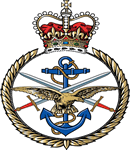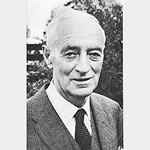Commemorated: | |||
| 1. Document: | New Zealand WW1 Masonic List | N.Z. | |
Awards & Titles: | |||
Early Life :
Gilbert was born in Marygate, York, 4th August, 1890 son of Thomas Archey, a schoolmaster, and his wife, Sarah Triffitt. The family immigrated to New Zealand when he was just two years old.Gilbert was educated at Christchurch West District High School. Early in life, he became engrossed in the study of his new homeland’s vast array of animals, insects, and plants. He then entered Canterbury College, graduating MA (Master of Zoology) with honours in zoology in 1913. He published his first pioneering scientific paper in 1911 while studying under Charles Chilton. Archey represented Canterbury at football in 1913. After teaching at Nelson College, he was appointed assistant curator at Canterbury Museum in 1914.
In 1914 he was appointed Assistant Curator at Canterbury Museum, where he published in-depth studies of New Zealand centipedes, which remain today as the foremost in their field.
He married Myrtle Florence Gee at Christchurch on 27 January 1915; they were to have three daughters.
Service Life:
Campaigns:
- The First World War 1914-1918, World-wide.
- The Second World War 1939-1945, World-wide.
| Unit / Ship / Est.: New Zealand Field Artillery |
| Action : War Survivor |
Although many perished in times of national conflict and in the service of their country, many more survived including those interned as Prisoners of War. Stories of those who did survive are included as part of this site, especially those with high gallantry awards, those included against an external rolls of honour and those who had a distinguished career in wartime and military leaderhip.
Detail :
"In 1912, Archey joined the New Zealand Field Artillery and served during World War I with the New Zealand Expeditionary Force. For his services during the war, he was appointed to the Order of the British Empire (OBE) in 1919. At the end of World War I, Archey resumed his work at the Canterbury Museum. He undertook field work across New Zealand and its islands, publishing dozens of zoological papers on his findings. His 1922 study of native frogs led to the rare species L. Archeyi being named in his honor. Today, the species is commonly referred to as “Archey’s frog.”"
"During World War II, Archey served in New Zealand as a lieutenant colonel in command of the 4th Battalion- Auckland Regiment from 1940 to 1943. Around this time, the British Museum had begun supplying lists of monuments and sites in need of protection in the Dutch East Indies to the South-East Asia Command (SEAC). At an April 1944 meeting between the SEAC, representatives of the Netherlands Government and Army, and Lt. Col. Sir Leonard Woolley, Archaeological Advisor to the War Office, it was decided to appoint a British MFAA Officer to oversee the area and liaise with Dutch art experts. After being selected by Woolley for the position, Archey was attached to the British Military Administration and arrived at SEAC headquarters in June 1945. During his time as the only Monuments Officer in the area, Archey worked tirelessly to protect churches, temples, monuments and archives in Sumatra, Malaya, Thailand, Java, and Indo-China"
See more at Monuments Men Foundation.
See more at The Encyclopeadia of New Zealand.
Masonic :
| Type | Lodge Name and No. | Province/District : |
|---|---|---|
| Mother : | York No. 236 E.C. | Yorkshire (North & East Ridings) |
Initiated | Passed | Raised |
17th June 1918 | 19th August 1918 | 17th February 1919 |
Source :
The project globally acknowledges the following as sources of information for research across the whole database:
- The Commonwealth War Graves Commission
- The (UK) National Archives
- Ancestry.co.uk - Genealogy, Family Trees & Family History online
- ugle.org.uk - The records of the United Grand Lodge of England including the Library and Museum of Freemasonry
Additional Source:
- Founder Researchers : Paul Masters & Mike McCarthy
- Researcher : Bruce Littley

